Protocol
The Protocol document is an e-doc that works as an electronic protocol application form created by a Researcher, which is submitted to the institution’s Institutional Review Board (IRB), and then reviewed by its committee members. The document will track required revisions, approval amendments, renewals and expiration. It is designed to take into consideration federally mandated criteria regarding human participants. It is configurable by implementing institution to follow local institutional policies and practices in proposed research to be able to assess the risk/benefit ratio for the proposed research project.
|
In this topic: Preface |
Jump to page subtopics: Online Review (Admin View) Online Review (Reviewer View) Watermarking Correspondences |
Preface
Before you begin to use the Protocol document, it is important to have a basic understanding of the context of its use and why it is important.
It is also helpful for you to understand the trigger or circumstance that initiates the need to use the functions of the Protocol document, and the fundamentals of its life cycle – when it is required, who completes it, its routing, etc.
Business Needs and Purpose
The Protocol document is completed whenever:
• A Researcher wants to submit a protocol application to their IRB
• A Researcher needs to revise, amend or renew their protocol
• A Researcher needs to notify the IRB of an issue or request a change to the status of the protocol
The Protocol document is used to:
• Ensure compliance with institutional research requirements
• Obtain Human Subjects approval in order for the Award to be approved
Policy
Implementing institutions have policies that drive the procedures and rules associated with usage of the Protocol document, including:
• Compliance with Federal government regulations and related business rules, including:
• 45 CFR 46.107 – Institutional Review Boards
• 45 CFR 164.512(i) (1) (B) – Privacy Boards
• 21 CFR 50 and 56 FDA Protection of Human Subjects
• Institution-wide policies regarding Conflict of Interest
Permitted Actions by Role
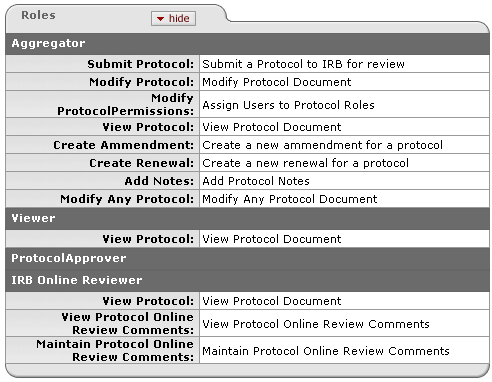
Figure 1095 Protocol Document Permissions
|
|
For more detailed information about assigned user roles, see “Permissions” on page 482 . |
Process Flow
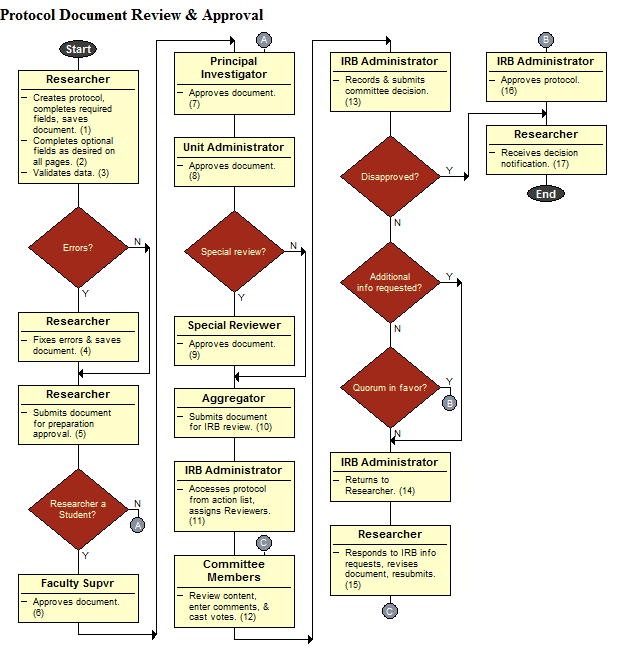
Figure 1096 Simplified Protocol Document Workflow - Process Flow Chart Diagram
|
|
For more detailed information, see “Detailed Process Flows” on page Error! Bookmark not defined.. |
Status
Document-specific status generally relates to completion-related actions – the states of the document while it is in the process of being prepared prior to submission for approval. These are configurable by implementing institution.
Examples of the Protocol document’s status changes throughout its lifecycle are:
• Pending/In Progress
• Submitted to IRB
• Specific Minor Revisions Required
• Amendment in Progress, Renewal in Progress
• Active - Open to Enrollment
• Active - Closed to Enrollment
• Active - Data Analysis Only
• Exempt
• Closed Administratively for lack of response
• Closed by Investigator
• Suspended by Investigator
• Withdrawn
• Expired
• Disapproved
• Terminated by IRB
• Suspended by IRB
• Not Human Subjects Research
• IRB review not required
• Suspended by DSMB
Workflow Status
Workflow status generally relates to approval-related actions - the routing of the completed document in the system for approval.
Even after approval and final disposition actions are completed, a permanent historical record of the Protocol document is always accessible.
View E-Doc Route Log:
 >
>  >
>

Click action list button > Outbox link > Log column icon to view the route log for a particular e-doc.
This allows you to review your Actions Taken and the Route Status for the document.
|
|
For more information about Workflow (a.k.a. Route) Status changes, see “Route Status” on page 206 in KEW Overview > Routing Rules. |
Access
Access to the Protocol document is based on Groups, Roles, Permissions and Responsibilities that are defined in the Kuali Identity Management (KIM) module. Generally speaking, the KC user interface allows Researchers to create new Protocol documents, while Unit and Central Admin users are able to search for and edit them.
|
|
For more functional information about e-doc access, see “Access” on page Error! Bookmark not defined. in Overview. |
|
|
Table 313 Protocol Document - Key Concepts
|
Concept |
Description |
|
Available Actions |
These change dynamically based on role and status. |
|
Online Review |
This is an additional page that appears on the far right of the other page tabs when applicable. |
|
Other Documents |
The Protocol document works closely with the Committee document to accomplish IRB approval. Additionally, it relies on complex maintenance documents such as Questionnaire for customization. |
Creating a new Protocol document
A Protocol e-doc may only be created by an authorized person with the Create Protocol role in KC. This is done by clicking the Create Protocol link in the Actions section of the Protocols group on the Researcher menu.
 >
>
 >
>  >
> 
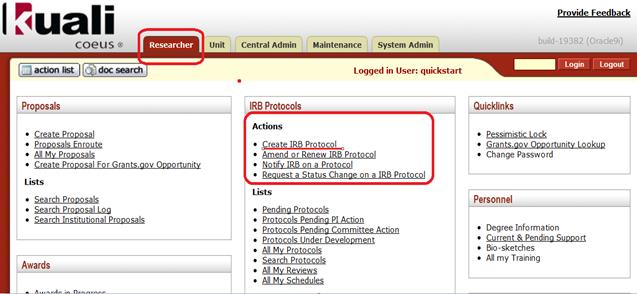
Figure 1097 Create Protocol from the Researcher menu
|
|
For more information about creating a new e-doc, see “Initiating a Document” on page Error! Bookmark not defined. in Common E-Doc Operations. |
Accessing an existing Protocol document
To work on an existing Protocol document, a Researcher may simply click the Search Protocols link from the Lists section of the Protocols group.
 >
>
 >
>  >
> 
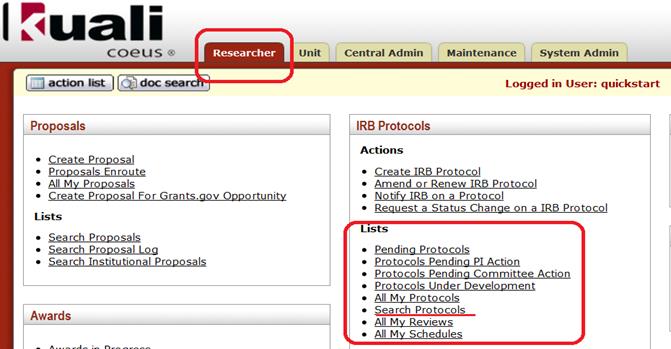
Figure 1098 Search Protocols from the Researcher menu
From the Unit or Central Admin menus, you may search for an existing, submitted Protocol document by using the Protocol Submissions lookup in the Post-Submission Compliance group.
 >
>
 >
>  >
>  >
>  >
>  >
> 
An existing Protocol document may also be accessed via the action list or doc search global buttons at the top, left of any KC screen.
|
|
For more information about using the action list, see “Using the Action List” on page Error! Bookmark not defined. in Common E-Doc Operations. |
|
|
For more information about using the doc search, see “Searching for a Document” on page Error! Bookmark not defined. in Common E-Doc Operations. |
Navigation Path Quick Start: Getting started – this quick system reference depicts how to access the start screen for this e-doc.
Create New:
 >
> 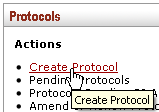
|
|
For more information on creating a new document, see “Initiating a Document” on page 107 in Common E-Doc Procedures. |
Access Existing:
 >
> >enter/select>
>enter/select> >
>
or…
 >
> >
>
or…
 >
> >
>  >
> 
or…
 >
>
 >
> >
> >
>
|
|
For more information on accessing an existing document using the global doc search button, see “ Searching for a Document” on page 114 and “ Doc Search” on page 77 in Overview.
| |
|
|
For more information on accessing an existing document using the global action list button, see “ Action List” on page 71.
|
|
Document Layout
The Protocol document is comprised of a header area at the top, right; 8-9 tabbed pages (Protocol, Personnel, Questionnaire, Custom Data, Special Review, Permissions, Notes & Attachments, Protocol Actions, and sometimes Online Review) organized horizontally across the top; a page body area that dynamically displays content based on the currently-accessed page; tabbed, expandable/collapsible sections containing fields on each page; and an action buttons area at the bottom, center of any page.
Table 314 Protocol Document Major Components Overview
|
Major Document Component |
Summarized Description |
|
Header area |
Document identification information at the top, right of the document containing both common and document-specific fields. |
|
Tabbed Pages |
Pages that make up the document which are accessible by clicking the folder tab for each. These are groupings of functionally related information for the purpose of display and collection and are generally designed to be completed in left-to-right order. |
|
Tabbed Page Sections |
Multiple tabbed sections of each page containing data entry/selection/display fields that are expandable/collapsible via hide/show buttons. Some sections contain subsections – the labels for which are highlighted in a darker shade of grey. |
|
Action Buttons |
Buttons that appear at the bottom, center of the document (regardless of page), some of which are common to all e-docs, and some of which are unique to this particular document. |
|
|
For more information about e-doc component features that are common to all e-docs, see “E-Doc Topology” on page Error! Bookmark not defined. in Overview > E-Doc Fundamentals. |
|
|
For more information about e-doc component features that are unique to the Protocol e-doc, scroll or click to navigate to the subsequent subtopic headings for each page and section that follows below. |
Document Header
The document header area of the Protocol document is comprised of six display-only fields at the top, right of the document. This is viewable regardless of currently-accessed page, and contains a minimum amount of basic information about the Protocol document to allow you to be sure you have accessed the correct document. Some fields are populated upon creation, while others display information only after subsequent user action. Each is described in the table that follows.

Figure 1099 Protocol Document Header Example
Table 315 Protocol Document Header Field Descriptions
|
Field |
Description |
|
Document Id |
The system-generated number that uniquely identifies the currently-displayed Protocol document, this is assigned upon initiation (create action from Researcher menu). |
|
Initiator |
Displayed when a new protocol is created, this is the User ID of the logged-in user who first created the new Protocol document. This also serves as a link to additional information about the user. |
|
Protocol # |
After you populate the required fields on the Protocol page and click the save button, the Protocol # is automatically assigned by the system. |
|
Status |
The state the Protocol document is in, which differs from its workflow routing status. |
|
Last Updated |
The time and date is displayed after the first save action, and updated with each save thereafter. |
|
Expiration Date |
Generated by an approval action, this is the last day of the current approval period, and changes due to a renewal approval action. |
Pages Overview
The Protocol document is made up of eight pages, each of which is accessed by clicking its corresponding tab. Upon initiation, the default view is the Protocol page. Each page is labeled according to the type of information collected, and contains tabbed, expandable/collapsible sections containing fields with entry and selection tools.
|
|
Page Order & Completion: The pages in KC e-docs are designed with the intent that you complete them in left-to-right order, although this is not required. In general, you may choose to work on any page in any order to complete the document. The one caveat is that in order to proceed to any page from the Protocol page, you must first fill out the required fields on the Protocol page and then click save. |

Figure 1100 Protocol Document – Horizontal Page Tabs Layout
Table 316 Protocol Document - Topic Links & Page Descriptions
|
Page Name & Topic Link |
Description |
|
Protocol |
General information about the Protocol |
|
The people involved in doing the work for the research project | |
|
The protocol questions themselves and selection/entry tools for answering them | |
|
Institution-specific data you’d like to record | |
|
Add specialized review types and track related status & dates | |
|
Assign roles to users (who can do what with regard to completion of the protocol) | |
|
Add textual comments or documents related to the protocol or personnel information | |
|
Perform tasks via commands such as submit, notify, expire, validate, print, copy, route, etc. | |
|
Medusa |
Allows viewing of e-docs associated with the protocol with a hierarchical tree view. |
Action Buttons
Standard action buttons appear at the bottom, center of the screen, regardless of currently-accessed page, as is true with any e-doc in KC.

Additional action buttons appear according to:
• the currently-accessed page
• the logged-in user’s permissions
• the document passing through various stages of completion
• the document passing through various stages of approval routing

|
|
For more information about action buttons, see “Action Buttons” on page 70 in Selection, Entry & Action Tools. |


 Protocol
Protocol